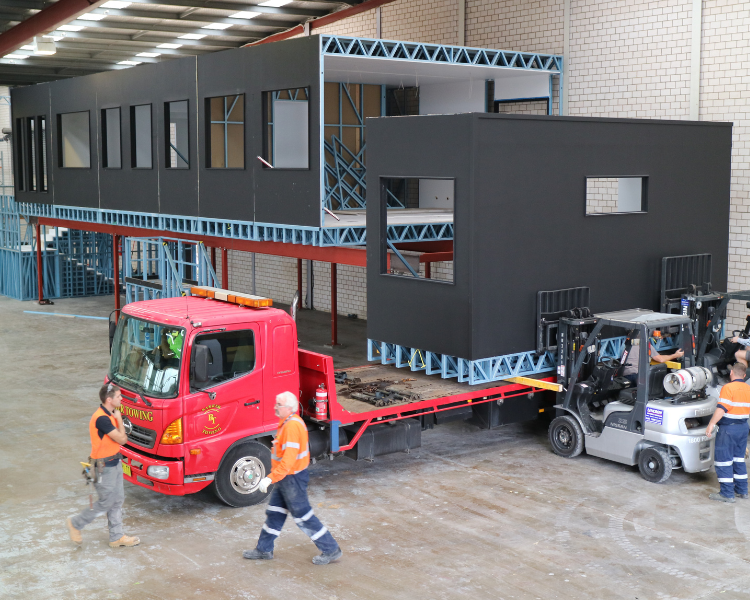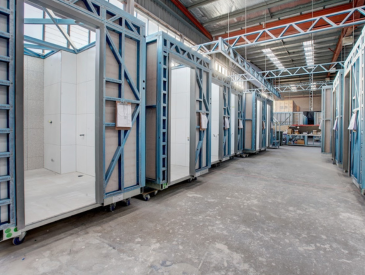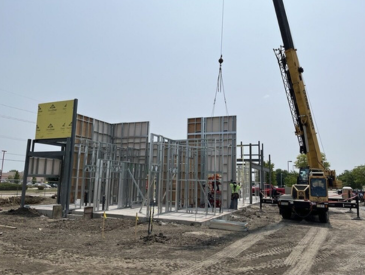Modular construction has emerged as a game-changer in the construction industry, where innovation and efficiency take center stage. Among the various methodologies, the choice between volumetric vs panelized approaches has gained prominence, with each offering unique advantages. This article explores the differences between volumetric and panelized construction for both developers and manufacturers.

Understanding Modular Construction
Modular construction has redefined the way we build structures. The concept involves creating building components off-site in controlled factory environments, promising efficiency, cost-effectiveness and quality control compared to traditional construction methods.
Volumetric Construction:
Complete Modules
Volumetric construction entails the creation of fully finished three-dimensional modules or pods off-site. These modules encompass everything from interior finishes to fixtures, providing a comprehensive solution.
Transportation and Installation
The modules are transported to the construction site, where they are lifted into place and assembled into the final structure. This method ensures a speedy and efficient construction process.
Speed and Efficiency
Volumetric construction, renowned for its rapid pace, involves the simultaneous manufacturing of multiple modules in the factory, with larger, more complete sections of a building being produced off-site.
This method results in less need for on-site trades, faster assembly and increased cost savings.
Design Constraints
While offering efficiency, volumetric construction may pose design constraints due to transportation and lifting considerations.
 |
 |
Panelized Construction:
Component Panels
Panelized construction involves producing individual building components or panels off-site. These panels, including walls, floors and roofs are typically not fully finished providing flexibility for on-site assembly.
Transportation and On-Site Assembly
Panels are transported to the construction site, where they are assembled into the final structure. On-site work involves connecting and finishing the assembled panels.
Flexibility and Customization
Panelized construction allows for more design flexibility and customization, making it adaptable to various project requirements. The assembly process involves connecting these panels to form the complete building.
Less Transportation Complexity
Transporting panels is generally less complex than volumetric units, as panels can be stacked on top of each other, providing logistical advantages.
Key Differences: Volumetric vs Panelized
Project Complexity
Volumetric construction is well-suited for projects with simple and repetitive designs, involving the creation of more complete, three-dimensional modules in the factory, including interior finishes. It is also popular for remote final locations, where it might be difficult and expensive for sub-trades to travel to the site. Whereas panelized construction, offering greater design complexity, focuses on fabricating individual panels or sections that may necessitate on-site assembly and finishing.
Transportation Logistics
Developers must consider transportation logistics and lifting capabilities when choosing between volumetric and panelized methods. Volumetric modules are transported as larger, self-contained units, while panelized components are transported as individual panels or smaller assemblies, potentially necessitating the shipment of more components to the construction site.
On-Site Customization
If on-site customization and adaptability are priorities, panelized construction might be the preferred choice.
Summary
The choice between volumetric vs panelized in the modular construction landscape boils down to project-specific considerations. Developers and manufacturers must align their strategies with project requirements, design complexity, site conditions, transportation considerations, timelines and market trends.
An alternative strategy involves integrating both volumetric and panelized approaches. For instance, constructing a bathroom as a comprehensive unit off-site (volumetric) and then incorporating it into a structure where pre-made panels assemble the walls (panelized) can offer an optimal solution.
By understanding the distinctions between volumetric and panelized construction, stakeholders can make informed decisions that optimize efficiency, cost-effectiveness and design flexibility.
To discuss more about modular construction book a meeting with Andreas Kilander from his calendar below.







